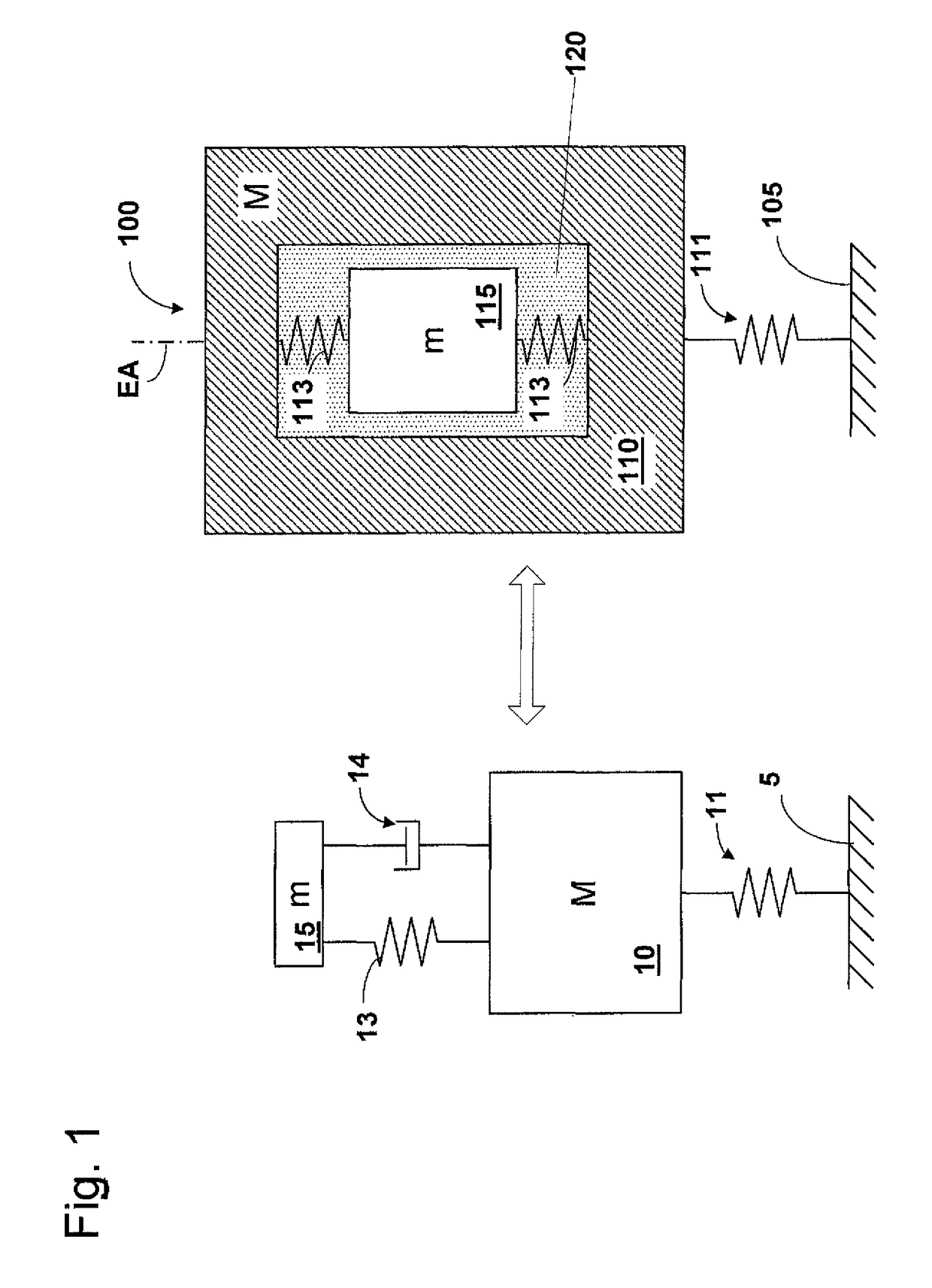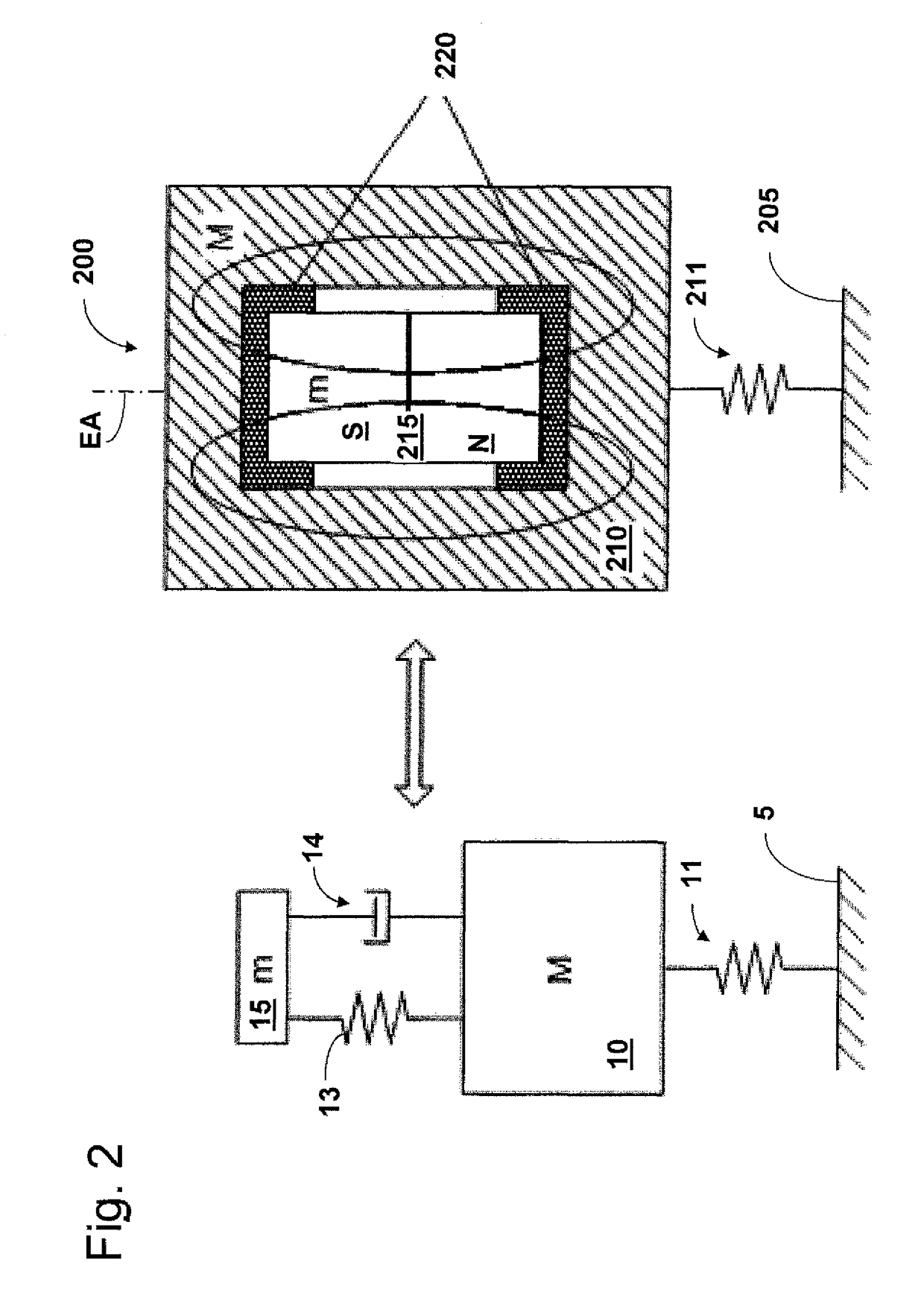Damping arrangement for dissipating oscillating energy of an element in a system, more particularly in a microlithographic projection exposure apparatus
a technology of oscillating energy and damping arrangement, which is applied in the direction of shock absorbers, photomechanical devices, instruments, etc., can solve the problems of mechanical disturbance, excessive increase, and disadvantageous effect on the positional stability of optical components, so as to optimize the damping degree of the system
- Summary
- Abstract
- Description
- Claims
- Application Information
AI Technical Summary
Benefits of technology
Problems solved by technology
Method used
Image
Examples
Embodiment Construction
[0057]Firstly, a damping arrangement in accordance with a first embodiment of the disclosure is explained below with reference to FIG. 1. The damping arrangement according to the disclosure is illustrated in the right-hand part of FIG. 1, whereas that is contrasted with a conventional damping arrangement using an oscillation absorber in the left-hand part of FIG. 1 for comparison purposes.
[0058]The damping arrangement 100 according to FIG. 1 serves for dissipating oscillation energy of an element 110 in a system, more particularly in a microlithographic projection exposure apparatus. The element 110 can be, for example, an optical element (more particularly a mirror), an actuator component of an actuator serving for actuating such an optical element, an articulated element, a reaction or filter mass or an arbitrary structural element, for example a carrying frame or a measurement frame.
[0059]In the exemplary embodiment (and without the invention being restricted thereto) the element...
PUM
| Property | Measurement | Unit |
|---|---|---|
| operating wavelength | aaaaa | aaaaa |
| operating wavelength | aaaaa | aaaaa |
| wavelength | aaaaa | aaaaa |
Abstract
Description
Claims
Application Information
 Login to view more
Login to view more - R&D Engineer
- R&D Manager
- IP Professional
- Industry Leading Data Capabilities
- Powerful AI technology
- Patent DNA Extraction
Browse by: Latest US Patents, China's latest patents, Technical Efficacy Thesaurus, Application Domain, Technology Topic.
© 2024 PatSnap. All rights reserved.Legal|Privacy policy|Modern Slavery Act Transparency Statement|Sitemap



